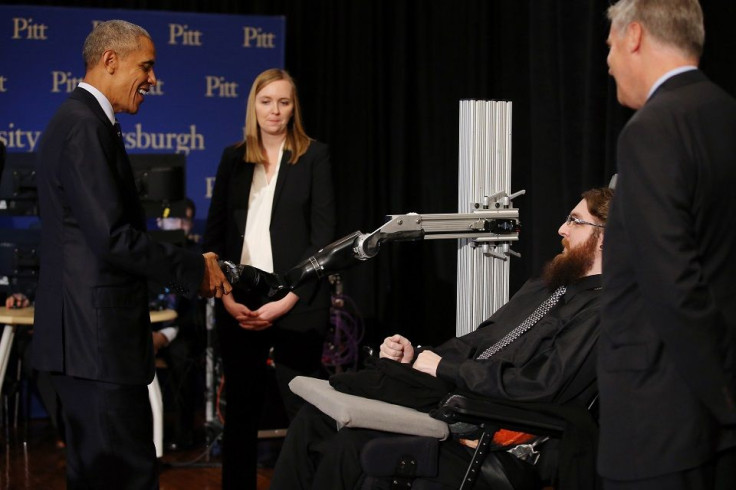Electrode implants on brain help paralysed man feel robotic fingers

Four tiny electrodes implanted in the left hemisphere of Nathan Copeland’s sensory cortex area in spring provided a sense of touch to the robotic arms of the 30-year-old man with tetraplegia. The electrodes were in addition to chips implanted in his brain which is connected to a mind-controlled robotic arm.
The cutting-edge experiment, a collaboration between the University of Pittsburgh and the University of Pittsburgh Medical Center (UPMC), were repeated over several months. With the success of the experiment, there is hope for people with mind-controlled robotic limbs to regain the sense of touch.
To test the ability of the new chips to make Copeland – who became paralysed in all four limbs when he was a teenager because of a car accident in 2004 – feel, he was blindfolded so what researchers were doing was not visible to him. Each researcher touched each finger on his right robotic arm, and in all instances Copeland correctly identified the location of the pressure, The Washington Post reports.
Despite his damaged spinal cord, which was bypassed using the electrode implants, Copeland felt pressure on his paralysed right hand. One handshake which Copeland felt and would not forget was on Thursday when US President Barack Obama was in Pittsburgh for a White House Frontiers Conference on advances in science, medicine and technology.
Since Copeland was a student of nanotechnology prior to the accident, he was seen by UPMC researchers are the perfect subject when he volunteered in 2011.
He said on Wednesday that he could feel just about every finger. “Sometimes it feels electrical, and sometimes it's pressure, but for the most part, I can tell most of the fingers with definite precision. It feels like my fingers are getting touched or pushed,” he said.
In providing a sense of touch to a robotic arm, UPMC overcame one of the great hurdles to creating a realistically functioning prosthetic arm, WebMD notes.





















